Celebrating 25 Years of Amazon Conservation this Earth Day
April 22, 2025
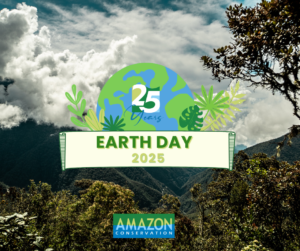 If you’ve been following us on our Earth Day countdown this past month, you’ve seen some of the highlights of what Amazon Conservation has been able to accomplish and contribute over the past 25 years! We’re thrilled that Earth Day is finally here, and as we celebrate all the wonderful ways nature has nurtured us, we can’t help but reminisce on how our community of conservationists has supported vital conservation efforts in the Amazon that keep our planet thriving.
If you’ve been following us on our Earth Day countdown this past month, you’ve seen some of the highlights of what Amazon Conservation has been able to accomplish and contribute over the past 25 years! We’re thrilled that Earth Day is finally here, and as we celebrate all the wonderful ways nature has nurtured us, we can’t help but reminisce on how our community of conservationists has supported vital conservation efforts in the Amazon that keep our planet thriving.
As we look back on our 25 years as conservation pioneers, we are honored to have received an overwhelming amount of support since our founding. Thanks to supporters like you, we have made groundbreaking achievements that have paved the way for effective conservation solutions, protecting one of the world’s most globally significant ecosystems. Join us as we take a trip down memory lane, reflecting on how your support has helped us flourish into who we are today. Together, we’re making a difference for people, wildlife, and the world as a whole.
Thank you for all you’ve helped us accomplish for the Amazon!
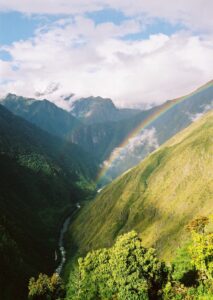
Amazon Conservation’s Founding
1999
In the 1980s, burning rainforests in Brazil drew worldwide attention to the plight of the Amazon Basin. Without a solidified plan for development and conservation, many international organizations rushed to develop plans for the conservation and development of the lower Amazon. In the late 1990s, a small group of conservationists looked higher, to the source of the Amazon. Our Co-Founders, Adrian Forsyth and Enrique Ortiz, developed our founding program that provided support for Brazil nut harvesters in Peru as an incentive for protecting the forest, one of the first of many locally driven, pragmatic conservation solutions that have become the hallmark of our organization.
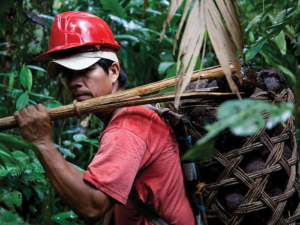 Beginning of Our Flagship Brazil Nuts Conservation Program
Beginning of Our Flagship Brazil Nuts Conservation Program
1999
Our flagship Brazil nuts conservation program begins, providing incentives for forest users to keep their forests healthy and standing through sustainably harvesting and selling raw Brazil nuts.
 Los Amigos Conservation Concession Created
Los Amigos Conservation Concession Created
2000
Los Amigos Conservation Concession is established as the world’s first conservation concession utilizing a public-private partnership model, developing a new blueprint for forest conservation that remains in use to this day. Covering 360,000 acres of critical terrestrial and aquatic habitats, Los Amigos continues to provide long-term protection for wildlife and hosts fundamental scientific research, technical workshops, and monitoring initiatives that promote the sustainable management and overall importance of the concession for conservation.
Read more about the Los Amigos Conservation Concession
 Our First Biological Station Established
Our First Biological Station Established
2000
Our Los Amigos Biological Station is inaugurated in the Madre de Dios region of southwestern Peru based on the conviction that the world’s greatest forest deserves the best research centers in the world. This biological research station sits on 1,119 acres of pristine forest; hosts a diverse array of research, training, and educational courses; and offers scientists access to advanced tools and technology for wildlife tracking, conservation genomics, and monitoring key species throughout the region.
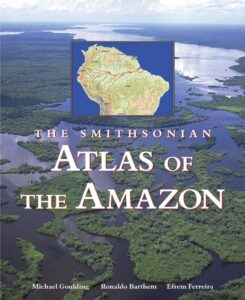
First Atlas of the Amazon Published
2002
We support the creation of the first watershed-based atlas of the Amazon, developed by staff scientists in partnership with the Smithsonian.
Learn more about the Atlas of the Amazon here.
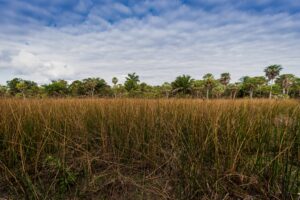 Expanded our Work on the Ground to Bolivia
Expanded our Work on the Ground to Bolivia
2004
We establish an on-the-ground permanent presence in the Bolivian Amazon to study and conserve the unique Pampas del Heath (rainforest savanna) ecosystem. See how our sister organization Conservación Amazónica-ACEAA has grown over the years.
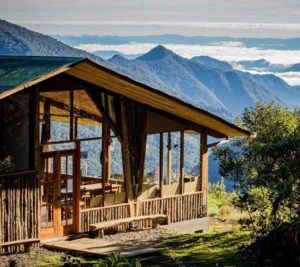 Wayqecha Cloud Forest Biological Station Established
Wayqecha Cloud Forest Biological Station Established
2005
We construct Wayqecha Biological Station, our second research station in Peru and the country’s first permanent field station focused on cloud forests.
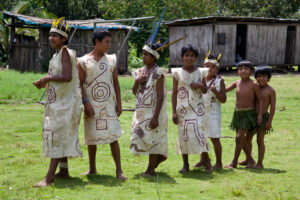
Flagship Indigenous Conservation Area Created
2008
We support the Wachiperi Indigenous community of Haramba Queros in developing the world’s first conservation concession managed by an Indigenous community, putting the power in the hands of those at the forefront of protecting forests.
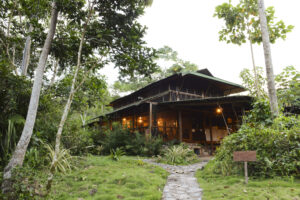 Manu Biological Station Established
Manu Biological Station Established
2010
Taking advantage of the impressive elevational gradient of 1,700-4,400 feet above sea level at the foothills of the Andes Mountains, we establish Manu Biological Station, one of the tropics’ most premier research stations.
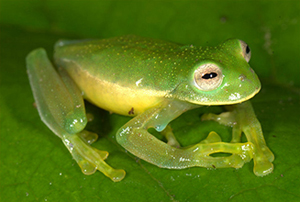 Discovered the 7,000th Frog
Discovered the 7,000th Frog
2012
Our support for research at our Wayqecha Biological Station contributes to the scientific discovery of the Wayqecha Centrolene sabini (Sabin’s glassfrog), the 7,000th amphibian species in the world.
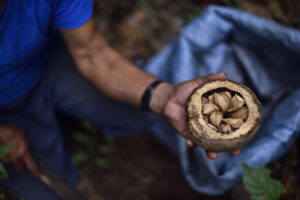 Started to Promote New Forest-Friendly Livelihoods
Started to Promote New Forest-Friendly Livelihoods
2013
We begin to promote other alternative livelihoods for local communities in Peru to earn a living without harming their forests, including ecotourism, agroforestry, and fish farms.
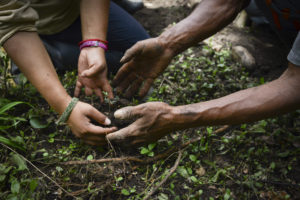 Planted 250,000 Trees to Date
Planted 250,000 Trees to Date
2014
The early stages of our reforestation efforts begin through local partnerships with communities and Indigenous groups to restore deforested or degraded areas, planting a quarter of a million trees.
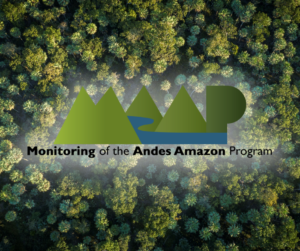 Real-Time Deforestation Monitoring Became a Reality Through MAAP
Real-Time Deforestation Monitoring Became a Reality Through MAAP
2015
We launch an innovative deforestation monitoring and analysis system called Monitoring of the Andes Amazon Program (MAAP), which uses the latest in satellite imagery and radar technology to find, track, and expose deforestation happening in Peru in real time.
Learn more about MAAP here.
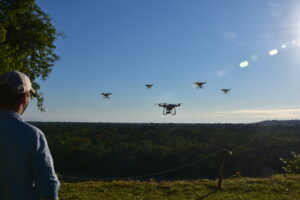 Inaugurated the Southwest Amazon Drone Center
Inaugurated the Southwest Amazon Drone Center
2016
Amazon’s first drone training and monitoring center is established through a pilot program at our Los Amigos Biological Station to provide local people with training and technology to detect deforestation in their forests
Connected Birdwatching and Conservation with Bird Observatory
2017
Located at our Los Amigos Biological Station, our Bird Observatory provides scholarships for upcoming ornithologists doing critical avian research and gives ecotourists a way to support conservation
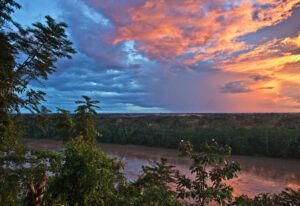
Supported Bolivia in Creating its Biggest Conservation Area Ever
2019
We provide technical support for the Ixiamas municipal government to create the Bajo Madidi conservation area, which protects an area 3 times the size of the Grand Canyon (3.8M acres)
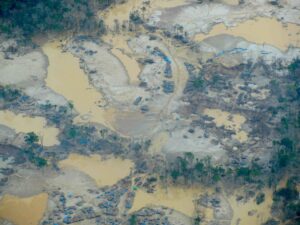
Aided Efforts to Stop Illegal Mining Deforestation
2019
We aid Operation Mercury–Peru’s most successful effort to stop illegal gold mining via our Monitoring of the Andes Amazon Program (MAAP). Stopping illegal deforestation using technology has since become central to all of our conservation efforts.
 Invented Novel Fire Tracking App
Invented Novel Fire Tracking App
2020
To detect and predict major fires across the Amazon, we developed a novel real-time fire tracker app that pinpoints the exact location of fires so that local people can prioritize prevention and containment efforts.
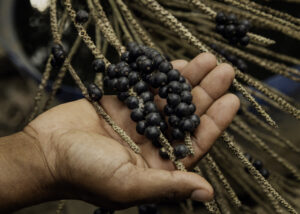 Devised the Amazonian Fruit Observatory
Devised the Amazonian Fruit Observatory
2022
We inaugurated the Amazonian Fruit Observatory, a platform for local forest producers in Bolivia to improve sustainable production and build resilience.
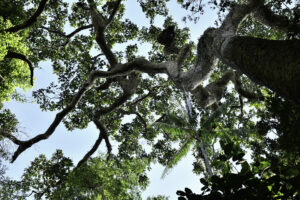 Planted over 750,000 Trees
Planted over 750,000 Trees
2023
Our community reforestation efforts over the years reached the threshold of almost 1 million trees planted to reforest degraded or damaged land in Peru and Bolivia.
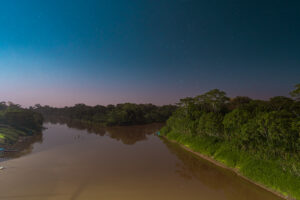 Reached 10.5 million Acres of Protected Forests
Reached 10.5 million Acres of Protected Forests
2024
Following the creation of two new conservation areas in Bolivia, we safeguarded 10.5 million acres of wild places to date through the creation of 37 conservation areas across Peru and Bolivia, ensuring protected areas and Indigenous territories are defended and well-managed for the 21st century.
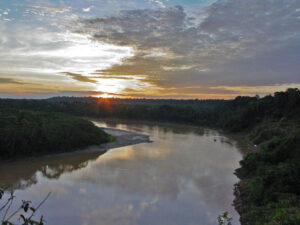 Grew Real-time Monitoring Technology and Action to Wider Amazon – 2025
Grew Real-time Monitoring Technology and Action to Wider Amazon – 2025
Throughout the years, we added new technology and technical capacity to MAAP, extending its impact to Bolivia, Brazil, Colombia, Ecuador, Peru, Suriname, and Venezuela through increased monitoring and action with local partners.
Looking to Give Back this Earth Day?
Explore Tax-Smart Ways to Support the Next 25 Years of Conservation >

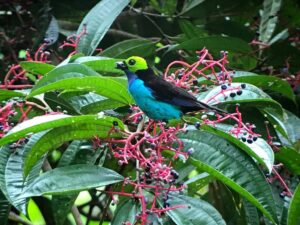
